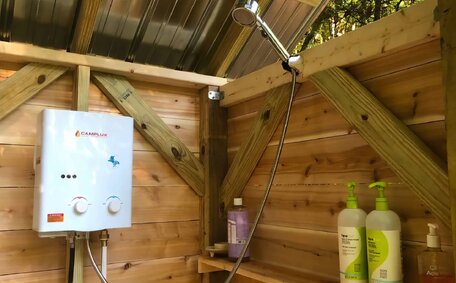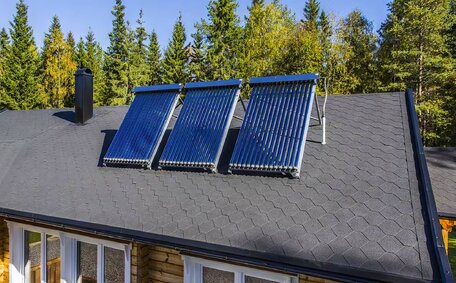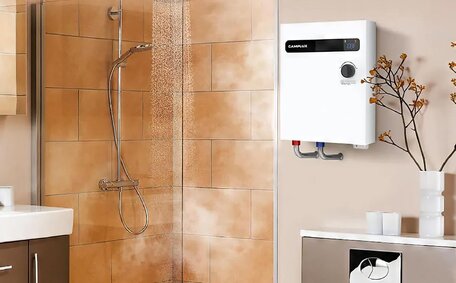Introduction to Pipe Relining
Pipe relining is a trenchless method for repairing damaged pipes without needing to dig them up. It involves installing a resin-saturated liner inside the existing pipe to essentially create a 'pipe within a pipe’. This allows pipe repairs and restoration without major demolition, making it a cost-effective and efficient solution.
Here at Cranebrook Plumbing located in Cranebrook, Sydney, we specialise in pipe relining for potable water, sewer, and even liner denture relines. The key benefits of pipe relining include:
- Less environmental impact - no need to dig trenches or remove large sections of pipe
- Extended lifespan for existing pipes
- Prevents leaks and corrosion
- Lower costs compared to full pipe replacement
The pipe relining process involves thoroughly cleaning and inspecting the pipes, then installing a liner saturated with epoxy resin which cures to form a smooth, seamless new 'pipe’. Liner materials vary, with options like felt, fibreglass, and even UV-curable plastic for potable water pipes.
The foundation of this article is a comprehensive study which was meticulously crafted to shed light on the nuances of pipe relining technology, exploring the broad spectrum of materials used, innovative curing techniques, anticipated durability, and thoughtful approaches for relining diverse pipe systems.
Common Pipe Relining Materials
When it comes to materials used in pipe relining, the options typically fall into a few main categories:
Epoxy resin is one of the most widely used pipe relining materials. It is a thermoset plastic that cures to form a rigid, protective barrier inside pipes. Epoxy resins are considered safe for contact with potable water once fully cured and meet industry standards.
Key properties of epoxy resin include:
- High strength and durability
- Excellent adhesion to create a seamless pipe lining
- Resistance to corrosion and chemicals
- NSF/ANSI 61 certified for potable water contact
Polyethylene (PE)
Polyethylene plastic liners provide flexibility and can conform to a variety of pipe bends and fittings. PE relining is often used for sewer pipes and non-potable applications.
Key features of polyethylene pipe liners include:
- Flexible material able to navigate pipe bends
- Resistant to abrasion and corrosion
- Cost-effective option
Glass-Reinforced Epoxy
Some liners incorporate fibreglass strands in an epoxy base for extra durability and strength. The resulting glass-reinforced plastic (GRP) is rigid but withstands high pressures.
Benefits of GRP liners include:
- Excellent pressure ratings up to 25 bar
- Withstands high temperatures
- Low coefficient of friction
When selecting materials, factors like pipe function, environmental conditions, and lifespan requirements help determine the ideal choice. Our experts evaluate each unique scenario to recommend the optimal relining solution.
Epoxy Resin
Epoxy resin deserves special mention as one of the most trusted and widely implemented materials for pipe relining across applications.
Once the existing pipe is thoroughly cleaned, epoxy-saturated liners are installed. The epoxy then cures to form a rigid barrier, bonding securely to create a smooth new pipe lining.
Curing times depend on the formulation, but many epoxy resins cure in just a few hours at ambient temperatures or can be accelerated by applying heat. This allows for reasonably quick installations and minimal downtime.
The resulting epoxy layer is highly durable, seamless, and corrosion resistant. Epoxy’s high strength also allows it to withstand pressure, impacts, temperature fluctuations and other pipe stressors.
Epoxy resins designed for potable water contact are certified safe for drinking water use. They are inert once fully cured, meaning they do not leach any harmful substances.
Our epoxy solutions come with an industry-standard 10-year guarantee, however relined pipes often continue performing reliably for twenty years or more before further maintenance is needed.
Overall, epoxy resin ticks all the boxes in terms of safety, strength, longevity and ease of application, cementing its status as the go-to solution for so many relining jobs.
Polyethylene
Polyethylene (PE) is another common pipe relining material valued for its flexibility and chemical resistance. Unlike rigid epoxy resins, PE liners can stretch and bend, allowing them to navigate tight radii and complex pipe routes.
The flexible nature of polyethylene makes it well-suited for relining scenarios that require high manoeuvrability, such as connecting household plumbing and drainage systems. PE liners can traverse multiple 45 and 90-degree bends with ease.
Polyethylene also stands up well to various chemicals. PE pipe liners provide protection against oils, salts, acids, and alkalis that might be present in liquid waste or industrial piping systems. This resistance to corrosion makes this material a sensible choice for non-potable installations.
While PE liners cannot withstand high pressures or temperatures to the same degree as materials like epoxy or GRP, their flexibility, chemical resistance and cost-effectiveness make them the natural choice for relining drain pipes, sewage pipes and other challenging plumbing runs.
Choosing the Right Relining Material
When selecting a pipe relining material, there are a few key factors to consider:
- Pipe function - What will be flowing through the pipes? Materials like epoxy resin and GRP liners are suitable for potable water, while polyethylene works better for non-potable liquids.
- Environment and stresses - Will the relined pipe need to withstand high temperatures, pressure, or corrosion risks? Epoxy and GRP provide the greatest durability.
- Bends and configuration - Flexible polyethylene liners allow for tight bends and complex routes. Rigid materials conform less easily to existing pipe layouts.
- Longevity - Epoxy resin typically offers 10+ year performance guarantees, with potential to last for decades if properly formulated.
- Cost - Polyethylene is the most budget-friendly option. Epoxy and GRP cost more upfront but provide long-term value.
Our team of experienced plumbers can assess your unique pipe layout, environment and requirements to help select the optimal relining material. We stay informed on the latest industry advancements in liner materials and curing processes.
In general, no one liner is inherently better than the others. It comes down to choosing the right solution for each customer’s circumstances. Get in touch for personalised relining recommendations backed by decades of plumbing expertise.
Relining Material Comparison
Material Pros Cons
| Epoxy Resin | - High strength and durability
- Seamless pipe lining
- Resistant to corrosion
- Certified for potable water
- 10+ year performance guarantee
| - Rigid material limits bend radius
- Higher upfront costs
|
| Polyethylene | - Flexible to navigate tight bends
- Resists many chemicals
- Cost-effective option
| - Lower pressure/temperature rating
- Not potable grade
|
| Glass-Reinforced Epoxy | - Withstands high pressures
- Increased strength and rigidity
- Handles temperature fluctuations
| - Navigating bends can be difficult
- Higher material costs
|
By comparing factors like durability, cost effectiveness and how suitable different materials are for potable water or drainage systems, the best option for each unique relining scenario can be determined. Our experts will assess your needs and pipe layout to recommend the ideal liner material and curing method.
The Pipe Relining Process
Relining pipes is a multi-step process requiring expertise and precision:
- Inspection - First, our technicians thoroughly inspect the pipe interior using CCTV cameras. This identifies any damage or defects.
- Cleaning - Next, we clean the pipes with high-pressure water jets to remove debris and prepare the surface.
- Measurement - Precise measurements are taken to custom-cut the liner material for a perfect fit.
- Liner Installation - The resin-saturated liner is inserted into the pipe and conforms smoothly to the interior walls.
- Curing - Certain liners like epoxy require heat or steam to activate curing. As the material hardens, it bonds securely to create a protective inner pipe.
- Inspection - Finally, we camera inspect the pipe again to ensure the liner has cured correctly with no defects.
When done properly, this relining process seals cracks and joints, preventing further leaks while restoring function. Epoxy curing in particular creates a seamless, corrosion-resistant lining with immense strength and longevity.
Our team handles every detail, applying decades of expertise to deliver reliable, long-lasting pipe repairs. Get in touch to learn more about our trenchless relining services.
Case Study: Relining Material Longevity
Here at Cranebrook Plumbing, we have seen firsthand how relining can extend the lifespan of ageing pipes for decades. One notable case involved the water mains under an apartment building in Penrith that had been leaking and causing corrosion damage over time.
After inspecting the 150 mm cast iron pipes with CCTV cameras, we found multiple fractures and leaks that would soon require major excavation and replacement if left unaddressed. To avoid this costly and disruptive option, we recommended epoxy relining.
We installed nearly 60 metres of epoxy-saturated liners throughout the building’s plumbing system. The epoxy cured within 14 hours at ambient temperatures, bonding securely to create a protective inner barrier that sealed all leaks and reinforced the existing pipes.
Over 5 years later in follow-up, the building manager reports the relined pipes show no new leaks or issues. The epoxy continues performing to its expected longevity thanks to the smooth, corrosion-resistant lining that renews old pipes from the inside. This is just one example of how trenchless relining with durable epoxy resins can extend the lifetime of pipes by decades compared to traditional replacements.
Denture Relining Materials and Considerations
When it comes to relining liner dentures, the materials used are specialised dental resins designed for comfort, function and biocompatibility inside the oral environment.
Typically, denture relines involve using vinyl polysiloxane (VPS) impressions materials. The denture is fitted with a custom tray, then a wash material is used to fully capture the shape of the tissues. This light-body VPS flows into every crevice for accuracy.
Following this, a medium or heavy body VPS is used to provide rigidity and dimensional stability along the borders. The different viscosities of VPS work together to create precision relined contours.
Denture acrylic resins are then used to reline the denture itself. These resins chemically bond to the existing denture base to provide seamless integration. Denture resins come in heat-cured or self-cured formulations, with options to balance factors like process time, strength and polishability.
Regardless of materials, the key goal is ensuring correct denture fit and comfort over time as the tissues change. Even the highest quality dentures require occasional maintenance, relining or rebasing to account for natural bone resorption and keep patients comfortable.
For those considering denture relines or have questions about materials, processes and options, consult your denturist or prosthodontist. As dental professionals, we can evaluate your case to recommend suitable courses of action for refitting dentures when the need arises.






